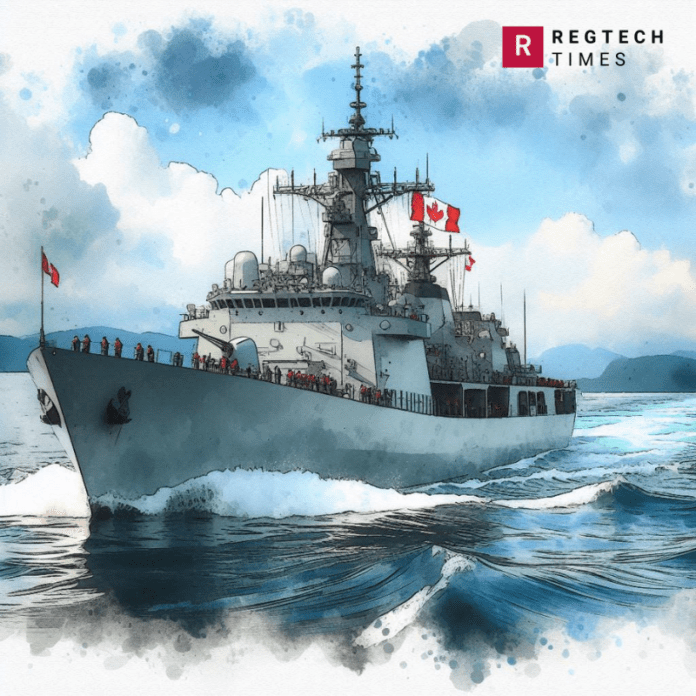On July 31, a Canadian warship, the HMCS Montreal, sailed through the Taiwan Strait. Ottawa described this as part of Canada’s commitment to maintaining an open Indo-Pacific. However, the move drew strong criticism from China. The Chinese government said that the naval exercise undermined peace in the region.
Canada’s Commitment to an Open Indo-Pacific
Canada’s Defence Minister Bill Blair explained that the HMCS Montreal’s transit through the Taiwan Strait was routine. His Majesty’s Canadian Ship HMCS Montreal going through the Taiwan Strait aligns with Canada’s Indo-Pacific Strategy, announced in 2022. HMCS Montréal (FFH 336) is a Halifax-class frigate in the Royal Canadian Navy (RCN) that has served in the Canadian Forces since 1993. On April 14, 2024, HMCS Montréal set sail from Halifax, Nova Scotia for a six-month deployment to the Indo-Pacific region as part of Operation “Horizon”
The strategy aims to increase the presence of the Royal Canadian Navy in the Indo-Pacific region. This is part of Canada’s broader goal to support a “free, open and inclusive” Indo-Pacific.
China’s Reaction and Concerns
China reacted strongly to the Canadian warship’s passage. Li Xi, a spokesperson for China’s People’s Liberation Army (PLA) Eastern Theater Command, claimed that the Canadian frigate’s transit was a provocative action. He argued that it disrupted the peace and stability of the Taiwan Strait. Li Xi said that China’s armed forces were prepared to counter any threats and were operating at maximum alert.
The Taiwan Strait is a busy and tense area. It separates Taiwan from China. China claims Taiwan as part of its territory. But Taiwan sees itself as a separate country. Ships and planes from other countries often pass through this strait. They do this to show support for Taiwan and keep the waters open for everyone.
China doesn’t like these foreign movements. It says they disrupt peace and stability. China has a strong military presence in the area. It is always on alert for any potential threats. The situation remains fragile as different countries navigate their interests and tensions in this important waterway.
Taiwan’s Stance on the Passage
Taiwan views the Taiwan Strait differently from China. While China claims sovereignty over the strait and the island of Taiwan, Taiwan and many international observers consider the strait an international waterway. Taiwan’s defense ministry assured that its military had complete control over the sea and airspace during the Canadian ship’s transit. They reported that the situation was normal and under control.
China’s Warning to Taiwan Escalates with Missile Tests and Warplanes Deployments
Canadian naval vessels HMCS Montreal passing through the Taiwan Strait are rare. Last November, a U.S. destroyer, the USS Rafael Peralta, and a Royal Canadian Navy frigate, the HMCS Ottawa, conducted a joint transit through the strait. This marked a significant event, as joint exercises involving Canadian ships in the area are infrequent.
In June of the previous year, another joint U.S.-Canada drill saw increased tension. During this exercise, a Chinese warship came dangerously close to a U.S. destroyer, creating a tense situation. The U.S. Pentagon described this as “unsafe.”
China Warns: The Deadly DF-26B Threatening U.S. Naval Power in the Pacific
U.S. warships regularly pass through the Taiwan Strait, along with occasional U.S. Navy patrol aircraft. These activities occur about once a month. These regular movements underscore the ongoing international interest and strategic significance of the Taiwan Strait.
HMCS Montreal’s recent passage through the Taiwan Strait serves as a reminder of the expanding international presence in the area. While Canada views its naval exercises as a commitment to an open and inclusive Indo-Pacific, China perceives these actions as provocative. The situation remains complex, with various countries and military forces navigating the delicate balance of power and influence in the region.


